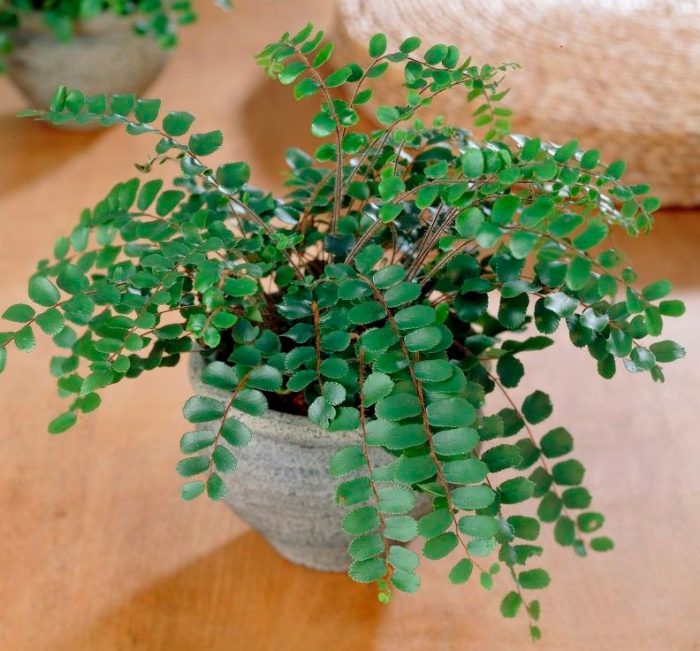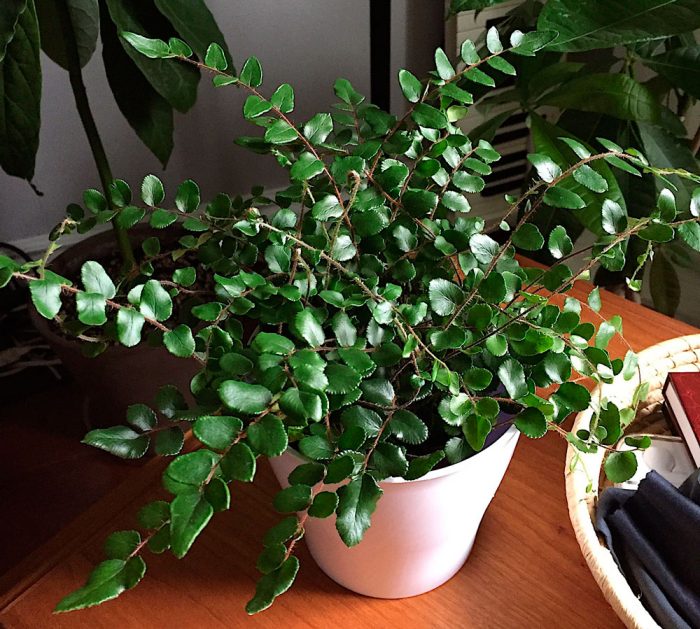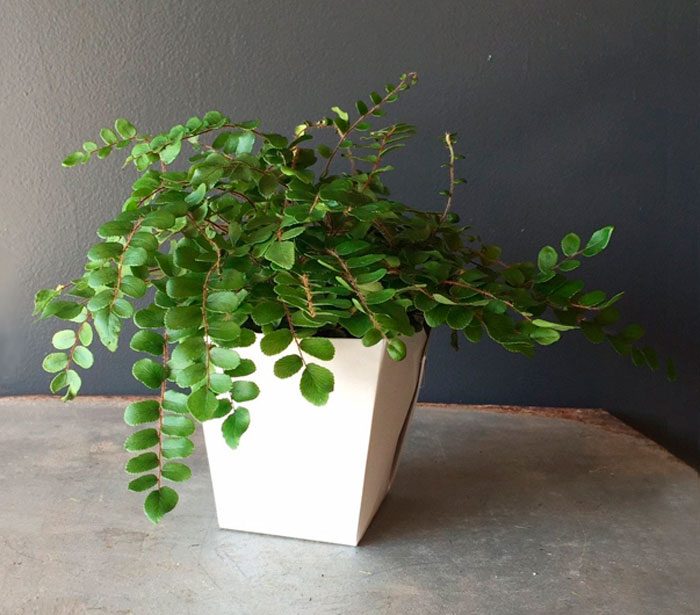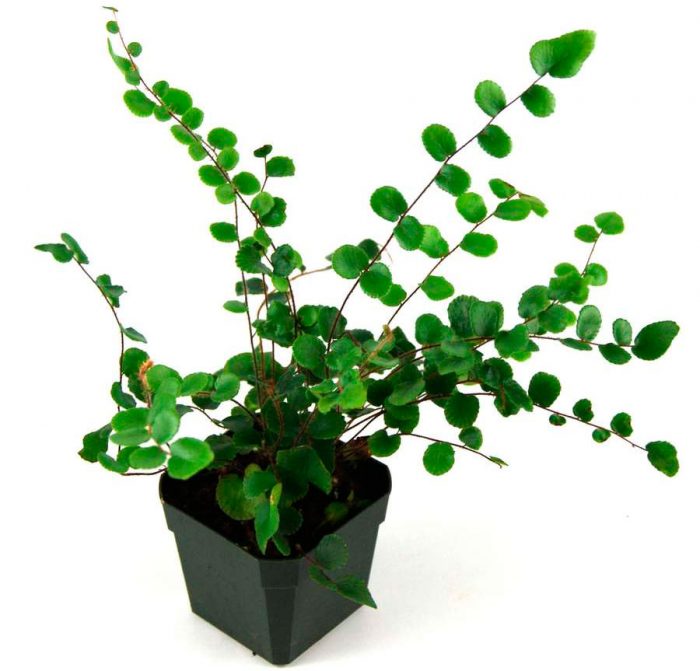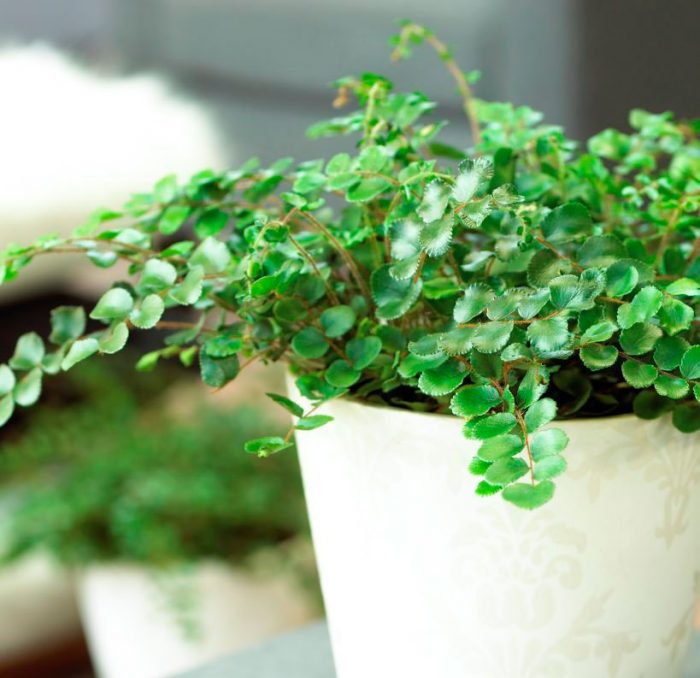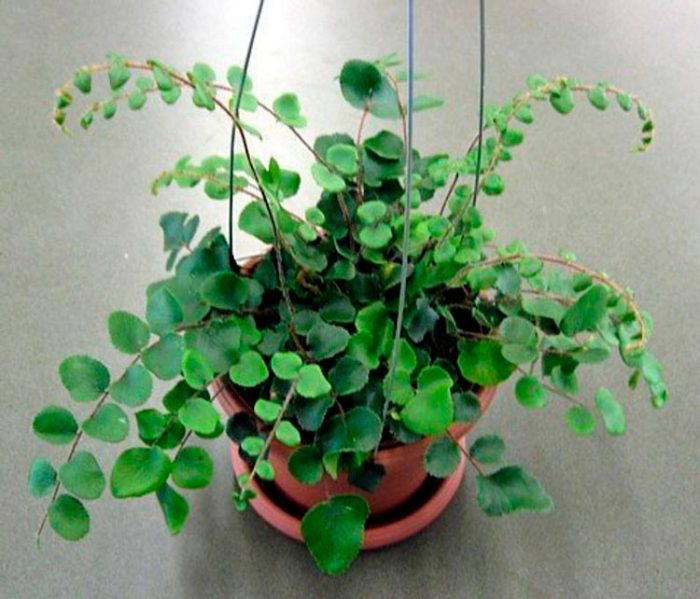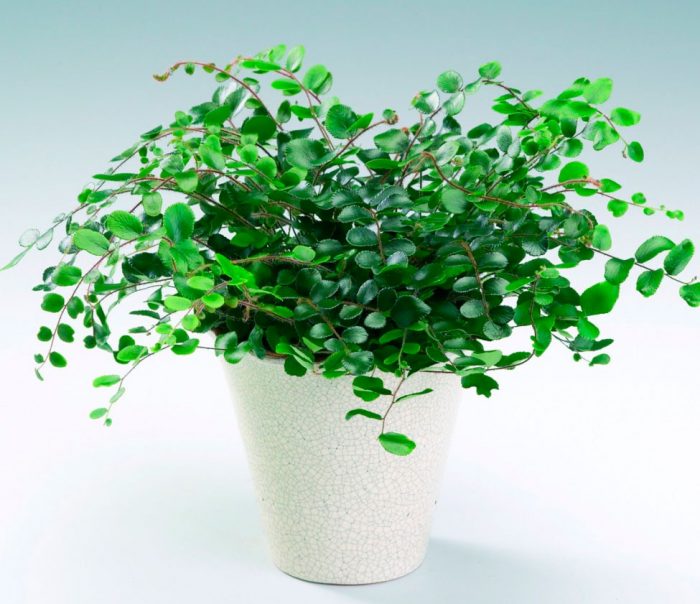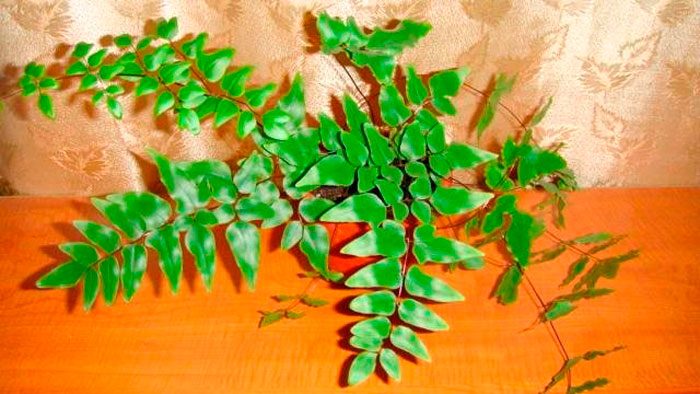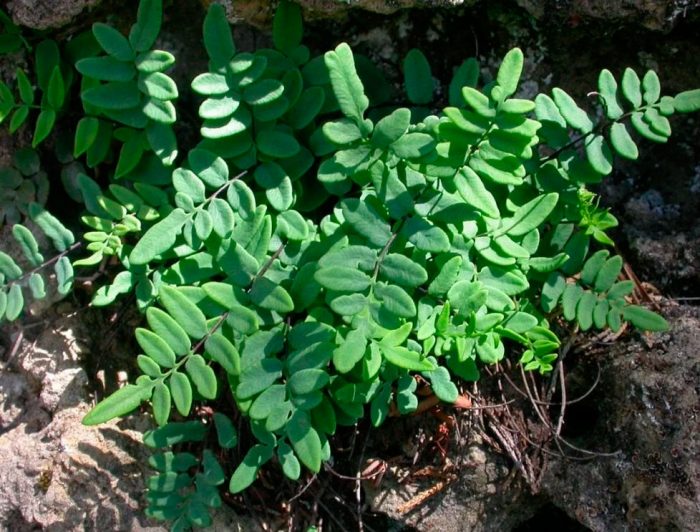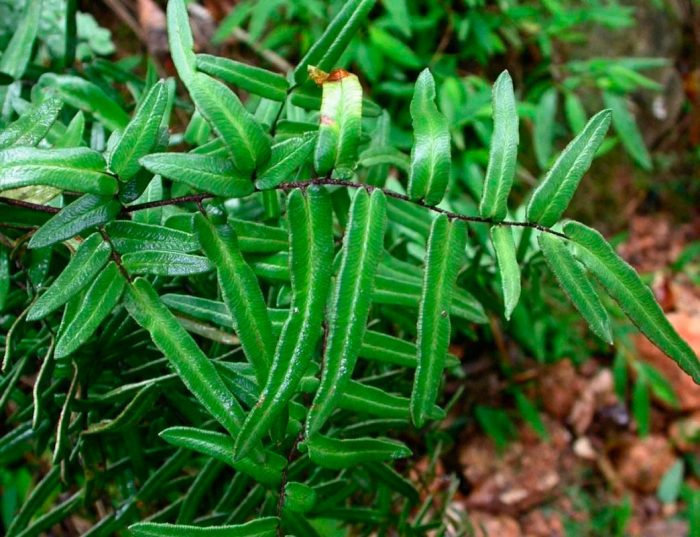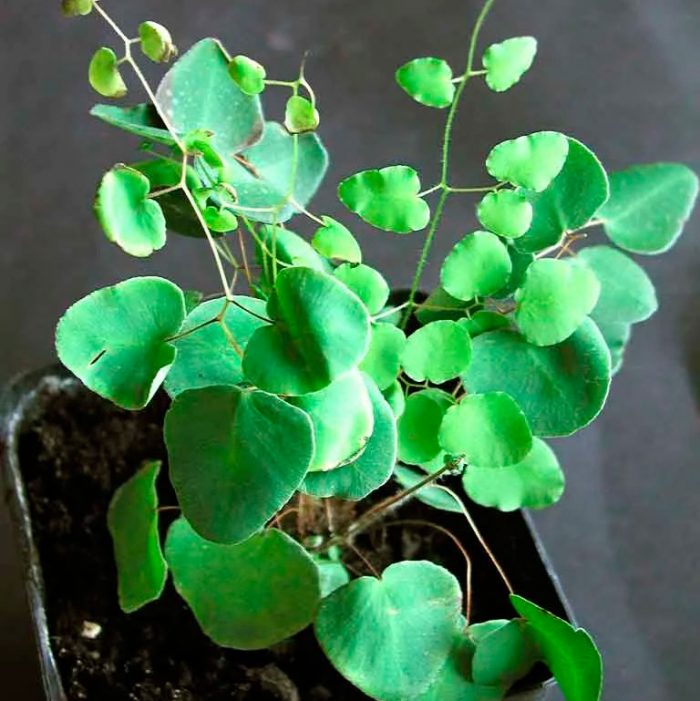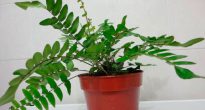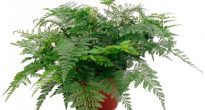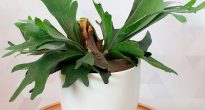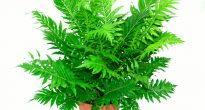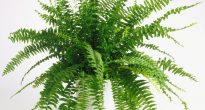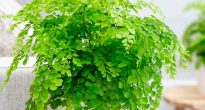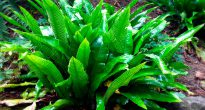The pellei fern is part of the Synopteris family. This genus unites about 80 species. In nature, this plant can be found in all regions with temperate and tropical climates. A large number of representatives of this genus are found on the island of New Zealand.
On parts of the continents, this fern grows in the coastal zone and is distinguished by a relatively high resistance to drought. During a prolonged drought, all the leaves can fly around him, but after moisture appears, the plant revives and becomes lush and spectacular again. In the event that the fern grown in the room is provided with the most favorable conditions, then it will certainly delight the grower with its lush bright greenery.
Homemade pellets can have a height of no more than 0.25 m. The length of the leaf plates can reach up to 30 centimeters, while their width is up to 1.3 centimeters. The growing season for such a fern lasts all year round, but its most intensive growth is observed in spring and summer.
Content
Caring for pellei at home
Illumination
The pellet fern needs a lot of bright, but diffused light. With poor lighting, the foliage becomes faded and dies off, and the growth and development of the bush become slower. If necessary, provide additional lighting for the fern, for this you can install a fluorescent lamp.
Temperature regime
During the most intense growth in summer, keep the room temperature around 23 degrees. In the cold season, it is recommended to transfer the fern to a cooler place (about 16 degrees), where it could rest and gain strength. If the room temperature is quite high, the bush should be regularly moistened with a sprayer, otherwise its foliage will begin to dry out.
Watering and humidity
Systematically moderately moisten the potting soil, making sure that moisture does not stagnate in the plant's root system, as this can cause rot development. In spring and summer, the bush is watered immediately after the surface of the substrate in the container dries out to a depth of about 10 mm. On average, watering is carried out three times a week.
The foliage in the summer must be systematically moistened with a spray bottle.And with the onset of the heating season, the frequency of spraying of the fern is increased.
Fertilizer
The plant is fed only in spring and summer, when its growth is most intense. In winter, it is not necessary to apply fertilizer to the soil mixture. For dressings, a complex mineral fertilizer is used, and they are carried out systematically with a frequency of 2 times a month.
Soil mixture
A soil mixture suitable for pelleti should consist of coarse sand, peat and leafy soil (1: 1: 1). In order to prevent stagnation of liquid in the root system of the fern, a good drainage layer must be made at the bottom of the pot.
If you do not like to cook the substrate with your own hands, then purchase a ready-made earthen mixture for ferns in a specialized store. It is recommended to add charcoal to it to make it looser and lighter.
Pruning and replanting
During transplanting, a new pot must be chosen so that it is about 20 mm higher and wider than the old planting container. It is recommended to transplant the plant using the transshipment method, while trying to keep the earthen lump intact. The fact is that the pellet transplant is quite painful. After the shrub is placed in a new container, carefully fill all voids with fresh potting soil.
The fern is transplanted only when absolutely necessary, when the root system becomes very crowded in the pot. Once every 2 or 3 years, be sure to add fresh soil mixture to the pot, while the old substrate is carefully removed to half the container. During transplantation, inspect the bush, if it has grown strongly, then divide it into parts. Delenki are planted in separate pots.
Trim the pellet regularly. This is necessary so that the shape of the bush is compact, as well as for getting rid of dried or old stems and leaf plates.
Reproduction methods
Dividing the bush
Pellei can be propagated by division only if the bush is rather large and strongly overgrown. Several stems are separated from the central part of the bush, which should have a well-developed strong root system. After that, the delenki are planted in individual pots, which are filled with the soil mixture used for transplanting adult plants (see above). In order for the delenki to take root successfully, it is recommended to cover them on top with a bag or a plastic bottle with a cut neck. Throughout the entire time, while the delenki take root, they should be kept in a place where it is warm, but not hot (about 23 degrees).
Growing up from spores
Fill a container with soil mixture, level the surface and sow the spores. Cover the crops on top with glass (film). Do not forget to systematically ventilate them, for this, opening the shelter for a while, and also watering them in a timely manner from a spray bottle. Crops should be in a shaded area. If everything is done correctly, the first seedlings should appear in about 1.5–2 months.
As soon as the first shoots appear, the container is transferred to a well-lit place. If this is not done, then young plants will begin to actively stretch out. And when the seedlings form several pairs of true leaf plates, they dive into separate small pots.
Diseases and pests
Most often, scabies, thrips and aphids settle on pellets from pests, and a nematode can hit it. To destroy harmful insects, the bush is sprayed with an insecticidal solution. In order to prevent the appearance of pests, it is recommended to regularly moisten the fern from a spray bottle.
If the foliage begins to turn yellow and dry, then this is a sure sign that the bush is affected by a nematode. Most often, the reason for this lies in the fact that the grower waters the plant with very cold water, which contains too much chlorine.
Curling and drooping of foliage may be due to the fact that the room where the plant is located is very rarely ventilated.
Types of pellets with photos and names
Round-leaved pellet
This species differs from the rest in that it is easiest to grow it indoors, because it is the most unpretentious. Notches are sometimes present on the edge of the pinnate leaf plates. The front surface of the foliage is dark green, and the back is lighter.
Pellea green
The roots of this species are creeping, and the edge of the leaf plates and shoots have a chocolate color. The succulent leaves are rounded. This plant differs from other species in that it is larger, and the shape of its foliage is oblong.
Pellea spear
The stems of this species are creeping, and the shape of its leaf plates is triangular. The foliage is about 0.6 m long.
Pellea nude
Such a plant has a rather spectacular appearance. Stems reach a height of 0.35 m. The foliage is formed on bare dark brown shoots. The species needs a lot of light and is highly frost-resistant.
Pellea dark purple
In length, foliage of this type reaches up to half a meter. There is a slight pubescence on the surface of the purple shoots. Experts advise, for a given plant cultivated in indoor conditions, to choose a place located next to the northern window.
Pellea egg-shaped
This compact fern is distinguished by its gracefulness. Large heart-shaped leaf plates are pale olive colored. The bush can reach a height of about 0.4 m, it grows well in bright diffused light.
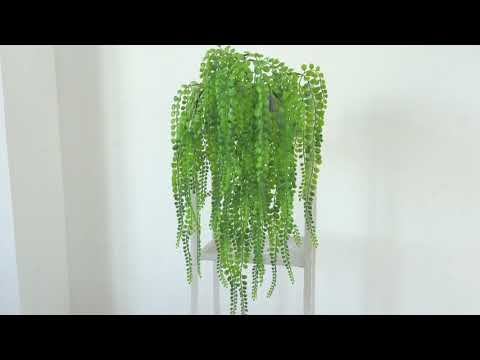

Watch this video on YouTube

